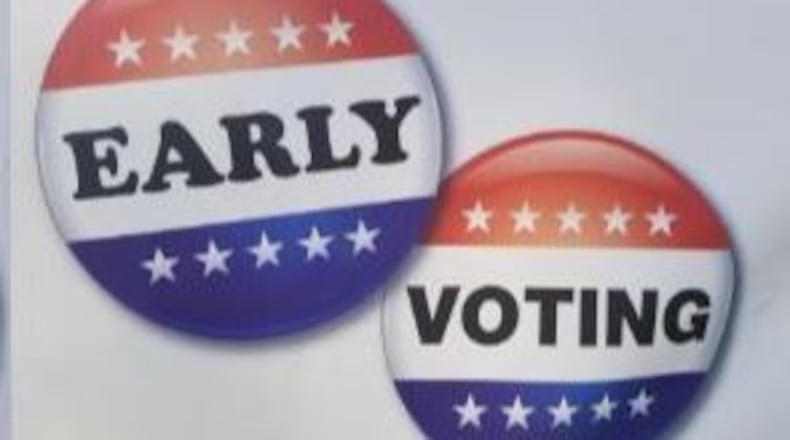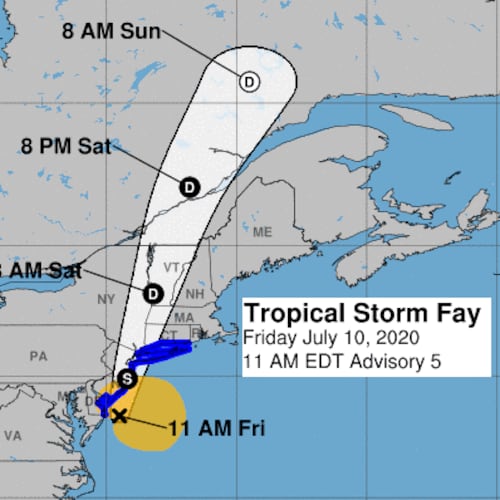With over 30 million votes already cast in the 2018 mid-term elections, the raw data about who is voting clearly shows a more energized mid-term electorate in many states than in the last mid-term election in 2014, with plenty of evidence that younger voters are getting out in much larger numbers as well, as the two parties try to figure out whether those benchmarks can help push them to victory on Tuesday.
As of Saturday, 28 states had already surpassed their mid-term early vote totals from 2014, according to University of Florida elections expert and early vote tracker Michael McDonald, as he said seven states have already doubled that last mid-term.
"I expect all 50 states plus DC will exceed their 2014 early vote. We may just not have the data before Election Day to validate it," McDonald said on Twitter.
The big question - obviously - is who the early vote helps. Let's take a look at a few examples of what's in the early vote numbers.
1. Georgia. With a close race for Governor driving turnout, the early vote in Georgia is already over 2 million - but the most remarkable part about that figure is the number of people who did not vote at all in 2014, now at almost 800,000 - almost 38 percent of all early ballots according to the GeorgiaVotes website. About half of those new votes from 2014 are from voters who are not white. With a black woman Democrat running for Governor, it will be interesting to see how the early vote breaks in that race.
2. Young voters. The age group of 18-29 is notorious for not voting in large numbers. But that seems to be changing in some states this year. In the above figures from Georgia, 19 percent of those who did not vote at all in 2014, but have already cast an early ballot, came from the 18-29 age group. Large increases in those voters are also coming from other states, like Tennessee, Texas, Nevada, and Arizona. Those four states just happen to be where Democrats are trying to win a GOP seat in the Senate. Will they really help the Democrats? Or are these votes breaking for the GOP? That's what we don't know right now.
3. Texas. One place that Democrats hope a big turnout of younger, first-time voters will help is in Texas, where Rep. Beto O'Rourke (D) is trying to knock off Sen. Ted Cruz (R). There were already strong anecdotal reports of new voters turning out in O'Rourke's home turf around El Paso - as for the data on new voters, it shows many of them are non-white. Tom Bonier of the group Target Smart says at this point in the 2014 mid-terms in Texas, voters over age 65 were out-voting those under 30 by a 10-to-1 margin. In 2018, it's just a 3-to-1 margin. "Young voters will be heard," Bonier says.
4. Florida. Find me a Democrat, and they will say the Florida early vote numbers look good for them. Find me a Republican, and they will say the Florida early vote numbers look good for them. According to my eyes, the Florida early vote as of Saturday morning showed Republicans with a small edge in Vote-by-Mail, and Democrats with an edge in early voting. But the biggest figure that stands out is that Democrats have a lot more absentee ballots which have not yet been sent in. Major races in Florida tend to be very close, and the numbers are telling a familiar story in the Sunshine State again this year - at least so far.
Credit: Jamie Dupree
Credit: Jamie Dupree
5. Nevada. Democrats have turned out a lot of votes in Clark County (around Las Vegas) and in Washoe County (around Reno), making things look good for them at this point. But, the nagging question that's there about the early vote is this - are you still going to have a big turnout on Election Day? We won't know that type of answer for Nevada or any other state until after the votes are in. But right now, Democrats have certainly done their turnout work in the Silver State.
6. What about the polls? Think about polling for a second. The pollsters all make their calls, and then they run their numbers through a turnout scenario, predicting what percentage of Republicans, Democrats and Independents will vote, whether to weight the vote for older voters, etc. But what if there is a big surge of younger voters - and first-time voters - and the polls aren't ready for that? Does that mean some of the numbers we are reading now won't be right? It's something to think about in the last few days of the 2018 campaign.
About the Author
The Latest
Featured




